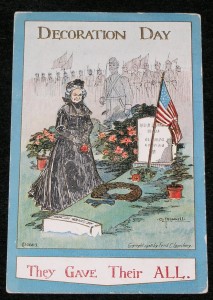Rebecca Brand August 1st
Kimberly Gilliland August 2nd
Rebecca Woods August 5th
Kathryn Hall August 16th
Ellis Henry Townsend August 27th
Women’s Issue.....Give your Brain a Workout!
By the time you’ve reached adulthood, your brain has developed millions of neural
pathways that help you process information quickly, solve familiar problems, and execute familiar tasks with a minimum of mental effort. But if you always stick to these well-worn paths, you aren’t giving your brain the stimulation it needs to keep growing and developing. You have to shake things up from time to time!
Memory, like muscular strength, requires you to “use it or lose it.” The more you work out your brain, the better you’ll be able to process and remember information. The best brain exercising activities break your routine and challenge you to use and develop new brain pathways. The activity can be virtually anything, so long as it meets the following three criteria:
By the time you’ve reached adulthood, your brain has developed millions of neural
pathways that help you process information quickly, solve familiar problems, and execute familiar tasks with a minimum of mental effort. But if you always stick to these well-worn paths, you aren’t giving your brain the stimulation it needs to keep growing and developing. You have to shake things up from time to time!
Memory, like muscular strength, requires you to “use it or lose it.” The more you work out your brain, the better you’ll be able to process and remember information. The best brain exercising activities break your routine and challenge you to use and develop new brain pathways. The activity can be virtually anything, so long as it meets the following three criteria:
-
It’s new. No matter how intellectually demanding the activity, if it’s something you’re
already good at doing, it’s not a good brain exercise. The activity needs to be
something that’s unfamiliar and out of your comfort zone.
-
It’s challenging. Anything that takes some mental effort and expands your knowledge
will work. Examples include learning a new language, instrument, or sport, or
tackling a challenging crossword or Sudoku puzzle.
-
It’s fun. The more interested and engaged you are in the activity, the more likely
you’ll be to continue doing it and the greater the benefits you’ll experience. The
activity should be challenging, yes, but not so difficult or unpleasant that you dread
doing it.
~~~~~~~~~~~~~~~~~~
Ancestral Tidbit......
Robert Sloan, Private, N.C. Militia, Pension # s 7523
On 27 Nov 1832 in court before Justices Archibald Maxwell, John Farrine and Hogan Hunter, appeared Robert Sloan, age 81, who being duly sworn, deposes and says that he enlisted under Col. Lillington, Capt. James Love, Lieut. David Cannon, Ensign John McCann and Sgt. Stephen Cade in January 1775 or 1776, and left the service in April or May 1776.
That he was in the battle of Moore’s Creek Bridge in Feb 1776, that they rendezvoused at Duplin Old Courthouse and marched to Rockfish Creek below Cross Creek about 7 miles in Cumberland County to Elizabethton (Elizabethtown) in Bladen County, that they went down the Cape Fear in a boat to Black River, and thence up Black River to Moore’s Creek.
That next they marched to Long Creek Bridge where an express was received from Col. Caswell directing them to march back to Moore’s Creek Bridge and help make entrenchments, that another express was received directing the to march higher up to Black River and reinforce Caswell, that this order was countermanded and they were instructed to march back to Moore’s Creek, that the night before the battle he was with a regiment at Rockfish in Cumberland County under Gen. Moore, that he (Sloan) knew Joseph Rhodes, John Walker, Curtis Ivey and Col. Malmaday (Malmedy), a Frenchman.
After the battle, they marched to Wilmington. Then Robert Sloan was furloughed home for 10 days.
He returned to Wilmington and then went to Brunswick County to Lockwood’s Folly, then back to Wilmington. He stated that he could prove this tour of service by James Wallace.
Sloan entered the service again under Capt. Isham Sheffield and Lieut. Barnett Brock. The regiment was commanded by Col. James Kenan and Col. Thomas Rutledge. The time was spring or early summer. He was marched to Wilmington, Jumping Run and over into Brunswick County. He was in no battles during this tour.
He served another tour under Capt. Charlie Ward, Lieut. Charles Brown and Sgt. Caleb Quinn and under the overall command of Col. James Kenan. This was in the fall of 1779-80. He was in a skirmish at Big Bridge in New Hanover County. The Americans were stationed at the N.W. side of the river where they came under heavy pressure and retreated.
The applicant served another term under Capts. James Gillespie and James Pearsall, Lieut. Samuel Houston and Ensign Henry Stokes. This was under the overall command of James Kenan and started in June or July 1780. He was not in the battle that followed because he had gotten 5 days leave to go home and hill out his corn. When he returned to Rockfish, he found that the enemy had gone to Wilmington. He camped along with other members of his unit at Rockfish for the remainder of this tour.
Sloan served another tour in 1781 under the same officers as in his previous tour. They were stationed at the Big Bridge above Wilmington when Col. Malmaday told him (Sloan) that Cornwallis and his army was marching from Wilmington towards the Bridge and was admonished by him to carry off the artillery and magazines. He was commanded by Col. Lillington to take a detachment and bring the artillery and magazines up the river in boats to Limestone Bridge. He got as far as Isham Sheffield’s landing where he guarded the equipment until it was sent for by the army at Kingston. Then his unit marched back to the Big Bridge. Sloan can prove this tour by Hugh McCann. Signed Robert Sloan, his x mark.
Robert Sloan was born 1752 near Belfast, County Down, Ireland, and the record of his age is written on a paper in the possession of John Green.
Robert Sloan lived only in Duplin and New Hanover Counties.
He cites for references Hugh McCann, John McKane, David Quinn, Rev. Gibson Sloan, Osborn Carr and William Carr.
Deposition of John McCann Sr and Peter Carlton, clergyman, as to the character of Robert Sloan.
William Carr, age 78 last May, served with Robert Sloan under Capt. James Love. Signed William Carr, his x mark.
Pension # s 7523 was granted under the Act of 6 April 1838, at $60 per annum. It was sent to the Honorable James McKay, Elizabeth, N.C. Robert received a total pension of $150.00
Those that used Robert Sloan as their patriot were: Thelma Mallard and Ruth Hearn Eakins.
















